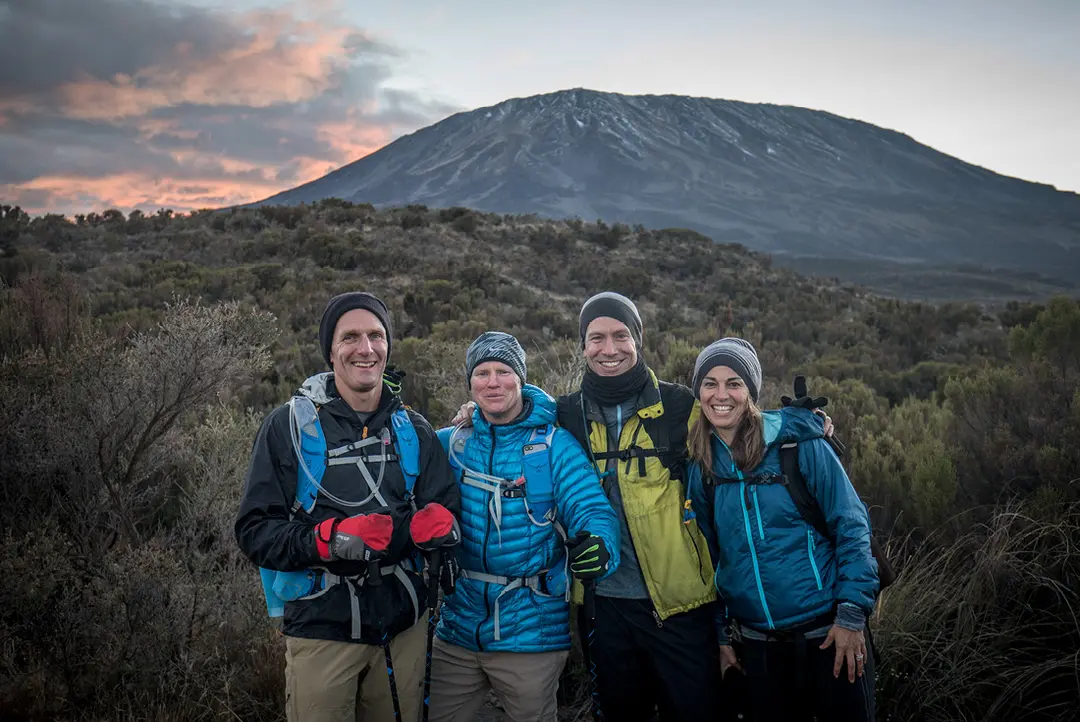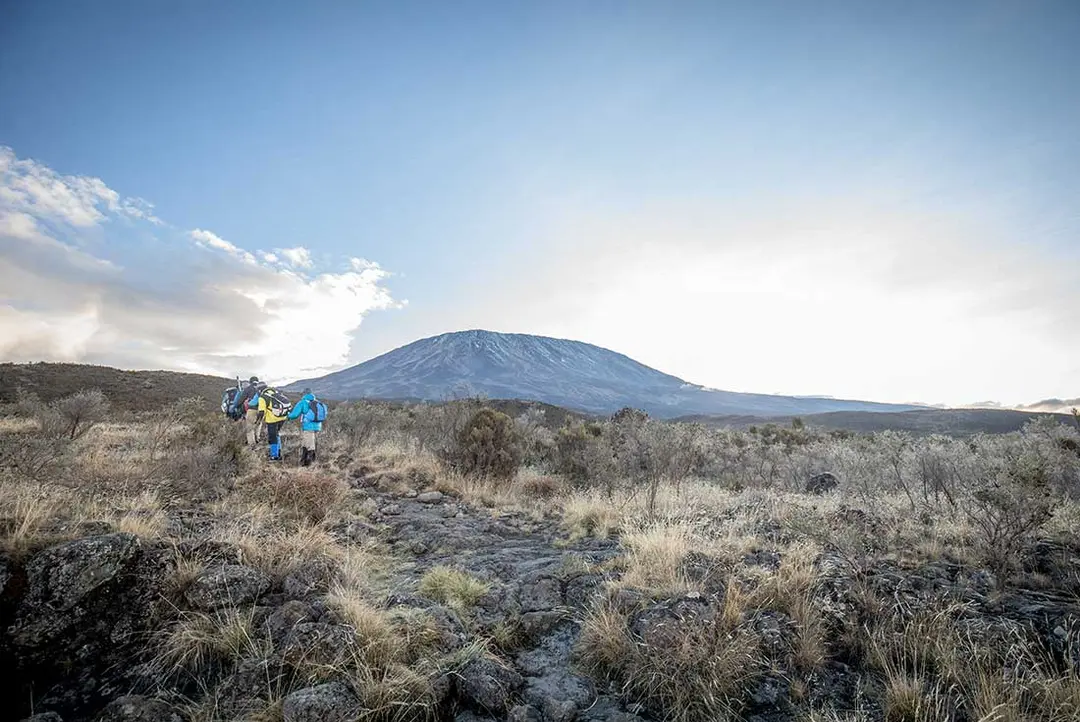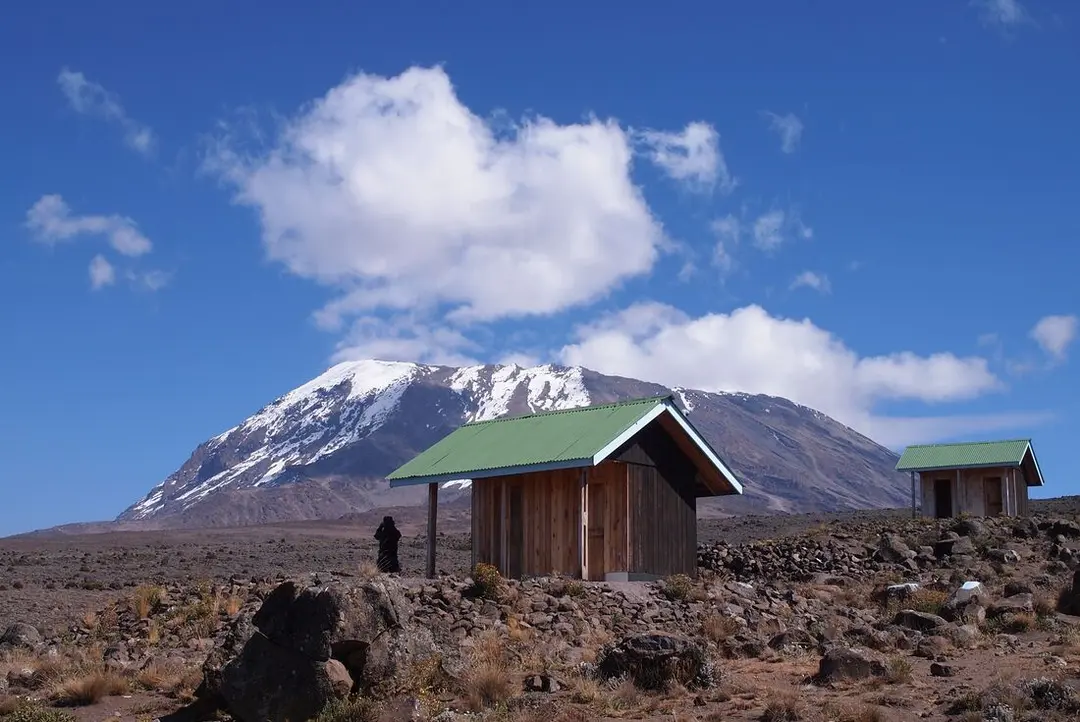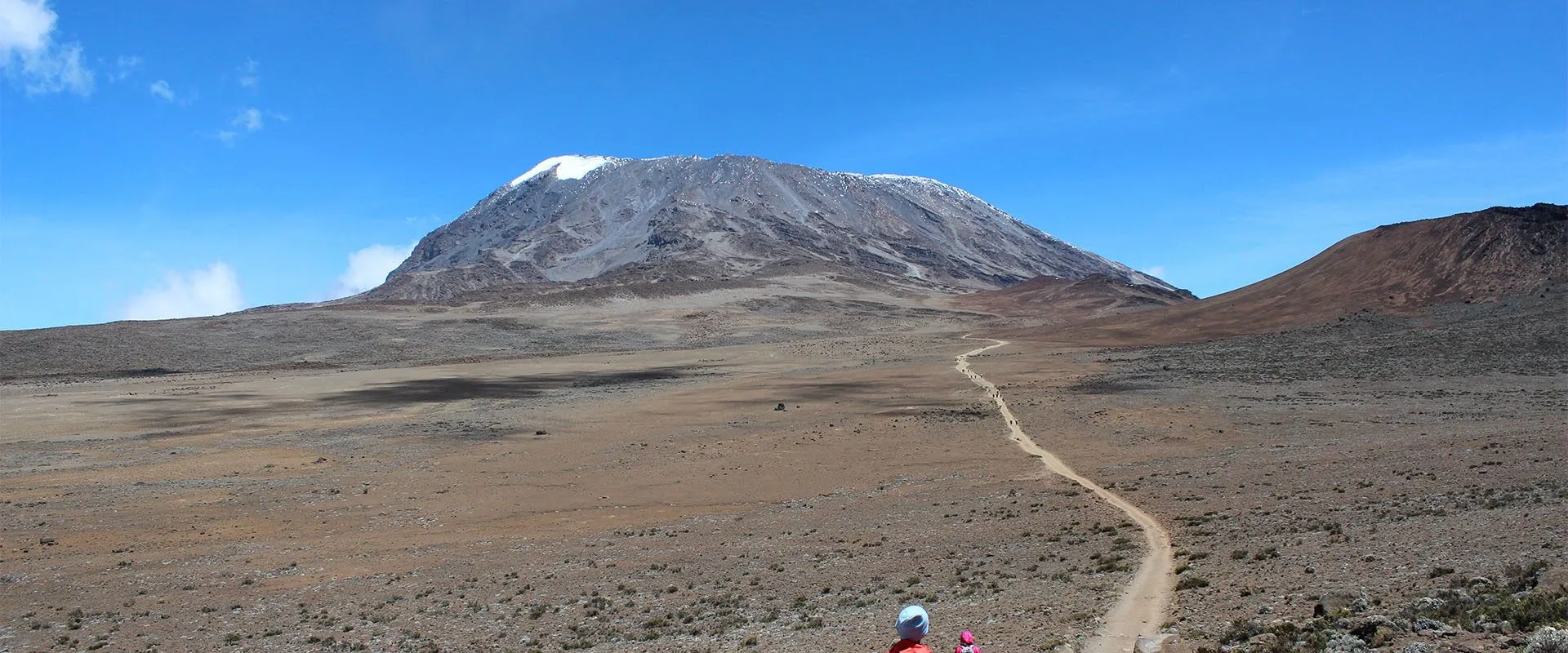Climbing Mount Kilimanjaro is a once-in-a-lifetime challenge for many visitors to Africa. Affectionately known as the ‘Roof of Africa’, this dormant volcano’s sheer scale combines geological intrigue, natural beauty, and a rich human history to attract more than 30,000 climbers annually. The climbing adventure takes you through muddy rainforests, rare high-altitude plants, and alpine meadows before finally arriving at the snow-capped summit.
Standing tall above East African savannahs, Kilimanjaro at 5,895m (19,340 feet) is a true icon of the African continent. Our Mount Kilimanjaro climbing tours and hikes are designed to match your experience and fitness levels, getting you to the summit with the best team possible. The climb is undeniably challenging, but when you sit at the summit, gazing at the sprawling savannah far below, you realize the simple truth: it was all worth it.
Top Mount Kilimanjaro Climbing Tours, Hikes & Travel Packages
FAQs About Mount Kilimanjaro Climbing Tours
1. Why should I choose a Kilimanjaro climbing tour?

In 1923, when asked why he wanted to climb Mount Everest, George Mallory famously replied, “Because it’s there. It is a one-liner that applies equally to Kilimanjaro, the tallest mountain in Africa.
At 5,895 meters / 19,340 feet, Mountain Kilimanjaro is not just Africa’s highest mountain, it is also the largest free-standing mountain on Earth. Free-standing means it is not a part of a mountain chain. More than that, Mount Kilimanjaro is an icon of Africa.
For many people, the image of African elephants in front of the mass of Mount Kilimanjaro simply is Africa. While the size of the mountain inspires a sense of awe, it is surprisingly easy to climb. As well, a week-long mountain climbing tour is easy to slot into a classic East African safari.
2. Which Mount Kilimanjaro Route should I climb?

There are 7 official routes up Mt Kilimanjaro, with some link-up combinations.
It is not easy to pinpoint the best route for climbing Mt Kilimanjaro as it depends on individual preferences and fitness levels. Kilimanjaro routes differ in length, steepness, popularity, and scenic variety. Your tour operator can help you decide which route matches your ability (for example, a more gradual climb) and expectations (the best views versus quieter paths).
The Marangu Route is the busiest. It is the only Mount Kilimanjaro trekking route with huts and is easily accessible from Moshi town with one of the shortest climbs. It can be done over 5 days.
However, its success rate is lower because it doesn’t allow enough time to acclimate impacts. And the descent follows the ascent route, which limits views and causes two-way traffic.
A longer choice is the Machame Route, allowing slower acclimatization, whereas the even longer Lemosho Route is quieter and has the best views. Both have high success rates.
The moderate, remote Rongai Route is the only one to ascend from the north of Mount Kilimanjaro National Park and offers good monkey-viewing opportunities. For experienced trekkers, the Umbwe Route is the shortest and steepest.
3. How many days should I plan for my Kilimanjaro Climbing Tour?

Most trekkers take about 5 to 9 days to summit and descend Mount Kilimanjaro. The climb is ideally done in the ‘pole pole’ style, which means ‘slowly’ in Swahili.
You are advised to set your own rhythm and maintain a steady pace from the start to manage the increasing steepness as you progress. Having more days in hand for the climb increases your chances of reaching the summit. You will have ample time for acclimatisation plus the opportunities to climb higher and sleep low. The descent is typically spread over 2 days.
In addition to climbing, there are various activities to enjoy in the area, such as exploring caves and waterfalls in the national park, touring banana and coffee plantations, or going on a safari.
4. What levels of fitness and climbing experience do I need?
Mount Kilimanjaro is more of a long, high-altitude trek than a technical climb, meaning you don’t need ropes, ice axes, or crampons. Therefore it is suitable for those without climbing skills. A basic level of fitness will make the experience more enjoyable rather than an arduous test of endurance.
If you are capable of taking long walks, a few months of regular walks, running, or hiking will help you build strength and stamina in your legs — plus confidence in your ability. If you don’t have basic fitness, a longer preparation period will be necessary to get you in sufficient shape.
It’s recommended to consult your doctor if you have concerns about your fitness or ability to cope with altitude. Climbing Mount Kilimanjaro is doable, but it is essential to approach it with a positive mindset and very positive vibes.
You may also like: Is Climbing Mount Kilimanjaro Hard?
5. What are the travel, accommodation and catering logistics?

Many airlines offer flights to Kilimanjaro International Airport.
Your chosen route will dictate your starting point, but many climbers travel by taxi or minibus to Moshi or Arusha, which serves as gateway towns to Mount Kilimanjaro National Park.
On the trek, you will sleep in huts or tents provided by the outfitter, with porters carrying your gear between camps. Cooks prepare carb-heavy, energy-rich, and easily digestible meals, plus local delicacies such as mandazi (African doughnuts), all washed down with stomach-settling ginger tea.
6. What equipment do I need to climb Mt Kilimanjaro?
A good tour operator should provide you with a kit list and rental options.
Since the routes pass through 5 climate zones, beginning in a humid rainforest and ending in a windy arctic landscape, it is important to bring plenty of layers so you can stay warm and dry at each stage.
Start with breathable base layers and add warmth with a fleece and an insulated jacket. Also, pack waterproof clothing and thermal layers for the nighttime.
Other essentials include comfortable shoes, a cap for protection, sunscreen, and a warm hat and gloves. Key equipment includes trekking poles, a head torch, and an insulated sleeping bag.
Also, bring a rucksack with at least a 30-litre capacity and a built-in hydration system. Consider packing luxury items to make your climb more comfortable, such as snacks, eye mask, and an inflatable pillow.
7. How much does a Kilimanjaro Climbing Tour cost?

A longer Kilimanjaro climbing tour will cost more, but it is important to consider the risks of struggling at altitude or failing to reach the summit on a rushed schedule compared to spending extra money to take it slowly to increase your chances of reaching the top.
The best time to climb Mount Kilimanjaro is during the dry seasons, from January to March and June to October. These months provide the greatest chances of clear skies and dry conditions, making the climb easier and more enjoyable.
However, be prepared for temperature variations both as you ascend and throughout the day. At the base, temperatures can reach up to 30oC, while at the summit, they can drop to as low as -20oC at night. Generally, the temperature decreases by about 60C for every 1,000 meters of altitude gained.
8. How do I choose a guide and tour operator?
Regulations state that climbers must ascend with a professional local guide.
As a result, any Mount Kilimanjaro expedition operator based outside of Tanzania will collaborate with local companies on the ground, helping to support the local economy. With many options available, it is crucial to research expedition outfitters carefully. Ensure that the tour operator is licensed by the Kilimanjaro National Park and registered with the Tanzania Association of Tour Operators.
Avoid choosing based on the cheapest prices, as these can often mean cutting corners by rushing the climb, using low-quality equipment, skipping essential items, or paying unfair wages to porters and other staff. Reading online reviews can provide insight into the quality of the services offered.
9. What are the main risks of Climbing Mt Kilimanjaro?

Altitude sickness is the primary risk and leading cause of death on the mountain. At above 2,500m, the oxygen thins out, resulting in symptoms ranging from headaches, dehydration, nausea, and loss of appetite to more severe and potentially fatal conditions like pulmonary or cerebral edema.
Altitude sickness can be mitigated by proper acclimatization, taking it slowly, staying hydrated, and climbing with accredited guides trained in first aid who can identify symptoms early.
They are equipped with bottled oxygen and can assist with descending if necessary. Responsible operators will also perform daily heart rate and pulse oximeter readings.
The climb can be psychologically challenging as well, especially since high altitude affects sleep quality. To boost morale, guides often teach the song ‘Jambo Bwana’, which means ‘hello, sir’ in Swahili, which serves as a motivational theme tune.
10. What ethical considerations should I be aware of?

Mount Kilimanjaro, a UNESCO World Heritage Site, is sacred to the local Chagga people, who revere it as a source of life and fertility. Respect the local people and environment.
Verify the sustainability credentials of tour operators and follow the ‘leave no trace’ principle: avoid littering, use camp toilets when possible, and stick to marked paths.
Single-use plastics are banned in the national park, so bring a reusable bottle or hydration system. Weigh-ins ensure that porters are not overloaded and rubbish is also weighed to deter littering.
Climate change is causing the summit glacier Kilimanjaro to disappear. Deforestation has worsened the situation, allowing warm, dry air to blow up the slopes.
To offset your carbon travel footprint, consider donating to a local tree-planting organization, which helps cool the air through the evaporation and the shade provided by forests.
At the summit, avoid touching the remaining ice cliffs as irresponsible guides may allow clients to climb on the fragile glacier, causing it to collapse.



